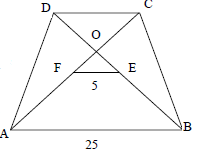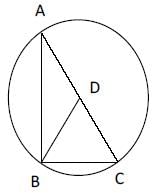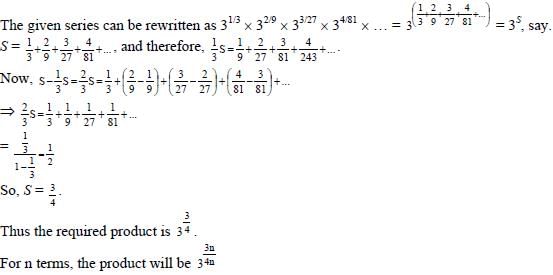Practice Test for IIFT - 5 - CAT MCQ
30 Questions MCQ Test - Practice Test for IIFT - 5
Suppose there are 4 bags. Bag 1 contains 1 black and a2 - 6a + 9 red balls, bag 2 contains 3 black and a2 - 6a + 7 red balls, bag 3 contains 5 black and a2 - 6a + 5 red balls and bag 4 contains 7 black and a2 - 6a + 3 red balls. A ball is drawn at random from a randomly chosen bag. The maximum value of probability that the selected ball is black, is
In the given figure, ABC is an equilateral triangle. If the area of bigger circle is 1386 cm2, then what is the area (in cm2) of smaller circle?
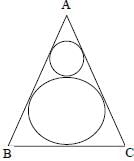

If x2 + 3x - 10 is a factor of 3x4 + 2x3 - ax2 + bx - a + b - 4, then the closest approximate values of a and b are
A tennis ball is initially dropped from a height of 180 m. After striking the ground, it rebounds (3/5)th of the height from which it has fallen. The total distance that the ball travels before it comes to rest is
If decreasing 70 by X percent yields the same result as increasing 60 by X percent, then X percent of 50 is
A mother along with her two sons is entrusted with the task of cooking Biryani for a family get-together. It takes 30 minutes for all three of them cooking together to complete 50 percent of the task. The cooking can also be completed if the two sons start cooking together and the elder son leaves after 1 hour and the younger son cooks for further 3 hours. If the mother needs 1 hour less than the elder son to complete the cooking, how much cooking does the mother complete in an hour?
Two alloys of aluminium have different percentages of aluminium in them. The first one weighs 8 kg and the second one weighs 16 kg. One piece each of equal weight was cut off from both the alloys and first piece was alloyed with the second alloy and the second piece alloyed with the first one. As a result, the percentage of aluminium became the same in the resulting two new alloys. What was the weight of each cut-off piece?
Three years ago, your close friend had won a lottery of Rs. 1 crore. He purchased a flat for Rs. 40 lakhs, a car for Rs. 20 lakhs and shares worth Rs. 10 lakhs. He put the remaining money in a bank deposit that pays compound interest @ 12 percent per annum. If today, he sells off the flat, the car and the shares at certain percentage of their original value and withdraws his entire money from the bank, the total gain in his assets is 5%. The closest approximate percentage of the original value at which he sold off the three items is
The average of 7 consecutive numbers is P. If the next three numbers are also added, the average shall
Capacity of tap Y is 60% more than that of X. If both the taps are opened simultaneously, they take 40 hours to fill the tank. The time taken by Y alone to fill the tank is
DIRECTION for the question: The question has four answer choices numbered (1), (2), (3) and (4). Select the best of the answer choices given.
If one of the roots of a quadratic equation is 115 / 11 + √6, then the quadratic equation must be ___
(i) x2 + 22x + 115 = 0
(ii) 2x2 + 44x + 115 = 0
(iii) x2 - 22x - 115 = 0
(iv) x2 - 22x + 115 = 0
The hands of a clock coincide after every 66 minutes of correct time. How much the clock gains or loses in 24 hours?
Ghosh Babu deposited a certain sum of money in a bank in 1986. The bank calculated interest on the principal at 10 percent simple interest, and credited it to the account once a year. After the 1st year, Ghosh Babu withdrew the entire interest and 20% of the initial amount. After the 2nd year, he withdrew the interest and 50% of the remaining amount. After the 3rd year, he withdrew the interest and 50% of the remaining amount. Finally after the 4th year, Ghosh Babu closed the account and collected the entire balance of Rs. 11,000. The total interest, in rupees, collected by Ghosh Babu was:
2 friends X and Y both start their employment on the 1st Jan 1950. X starts off with an initial salary of Rs. 300 per month and with an annual increment of Rs. 30 per month. Y starts of with an initial salary of Rs. 200 per month but with six monthly increments of Rs. 15. All salaries are given on the last day of the calendar month. What is the total salary drawn by X and Y till the 31st of Dec 1959?
A person on tour has Rs. 360 for his daily expenses. He decides to extend his tour programme by 4 days which leads to cutting down daily expenses by Rs. 3 a day. The number of days of his tour programme is
In a trapezium, when the mid-points of the diagonals are joined, the line so formed is 5 cm long. Further, if the length of one of the parallel sides of the trapezium is 25 cm, then find the length of the other parallel side.
In triangle ABC, ∠B is a right angle, AC = 6 cm, and D is the mid-point of AC. The length of BD is
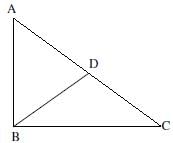
The population of a town is 155625. For every 1000 males there are 1075 females. If 40% of the males and 24% of the females are literate, find the percentage of literacy in the town.
Sugar at Rs. 30 per kg is mixed with sugar at Rs. 40 per kg in the ratio 2:3. The price of new mixture per kg is
If a, b and c are distinct positive numbers not equal to 1 and if (logca)(logba) + (logab)(logcb) + (logbc)(logac) = 3, then the value of abc is
A, B, and C started a business with capitals of Rs. 8000, Rs. 10000 and Rs. 12000 respectively. At the end of the year, the profit share of B is Rs. 1500. The difference between the profit shares of A and C is?
A hare pursued by hound is 30 m before the hound at starting. Whilist the hare takes 4 leaps the hound takes 3. In one leap the hare goes 1(1/2)m and the hoound 2(1/2)m. How far will the hare have gone when the hound will catch the hare?
The odds against a certain event P are 7 : 4 and the odds in favour of another independent event Q are 8 : 7. The probability that at least one of the events will happen is:
What is the product of the first n terms of the series 31/3 x 91/9 x 271/27 x ... ?
A sum of money is accumulating at compound interest at a certain rate of interest. If simple interest instead of compound were reckoned, the interest for the first two years would be diminished by Rs. 20 and that for the first three years, by Rs. 61. What is the sum?
DIRECTIONS for the question : Read the passage and answer the question based on it.
Although the legal systems of England and the United States are superficially similar, they differ profoundly in their approaches to and uses of legal reasons: substantive reasons are more common than formal reasons in the United States, whereas in England the reverse is true. This distinction reflects a difference in the visions of law that prevails in the two countries. In England, the law has traditionally been viewed as a system of rules; the United States favours a vision of law as an outward expression of community's sense of right and justice.
Substantive reasons, as applied to law, are based on moral, economic, political and other considerations. These reasons are found both "in the law" and "outside the law" so to speak. Substantive reasons inform the content of a large part of the law: constitutions, statutes, contracts, verdicts, and the like. Consider, for example, a statute providing that "no vehicles shall be taken into public parks." Suppose that no specific rationales or purposes were explicitly written into the statute, but that it was clear (from its legislative history) that the substantive purpose of the statute was to ensure quiet and safety in the park. Now suppose that a veterans' group mounts a World War II jeep (in running order but without a battery) as a war memorial on a concrete slab in the park, and charges are brought against its members. Most judges in the United States would find the defendants not guilty because what they did had no adverse effect on park's quiet and safety.
Formal reasons are different in that they frequently prevent substantive reasons from coming into play, even when substantive reasons are explicitly incorporated into the law at hand. For example, when a document fails to comply with stipulated requirements, the court may render the document legally ineffective. A Will requiring written witness may be declared null and void and, therefore, unenforceable for the formal reason that the requirement was not observed. Once the legal rule - that a Will is invalid for lack of proper witnessing - has been clearly established, and the legality of the rule is not in question, application of that rule precludes from consideration substantive arguments in favour of the Will's validity or enforcement.
Legal scholars in England and the United States have long bemused themselves with extreme examples of formal and substantive reasoning. On the one hand, formal reasoning in England has led to wooden interpretations of statutes and an unwillingness to develop the common law through judicial activism. On the other hand, freewheeling substantive reasoning in the United States has resulted in statutory interpretations so liberal that the texts of some statutes have been ignored.
Q. Which one of the following best describes the content of the passage as a whole?
DIRECTIONS for the question : Read the passage and answer the question based on it.
Although the legal systems of England and the United States are superficially similar, they differ profoundly in their approaches to and uses of legal reasons: substantive reasons are more common than formal reasons in the United States, whereas in England the reverse is true. This distinction reflects a difference in the visions of law that prevails in the two countries. In England, the law has traditionally been viewed as a system of rules; the United States favours a vision of law as an outward expression of community's sense of right and justice.
Substantive reasons, as applied to law, are based on moral, economic, political and other considerations. These reasons are found both "in the law" and "outside the law" so to speak. Substantive reasons inform the content of a large part of the law: constitutions, statutes, contracts, verdicts, and the like. Consider, for example, a statute providing that "no vehicles shall be taken into public parks." Suppose that no specific rationales or purposes were explicitly written into the statute, but that it was clear (from its legislative history) that the substantive purpose of the statute was to ensure quiet and safety in the park. Now suppose that a veterans' group mounts a World War II jeep (in running order but without a battery) as a war memorial on a concrete slab in the park, and charges are brought against its members. Most judges in the United States would find the defendants not guilty because what they did had no adverse effect on park's quiet and safety.
Formal reasons are different in that they frequently prevent substantive reasons from coming into play, even when substantive reasons are explicitly incorporated into the law at hand. For example, when a document fails to comply with stipulated requirements, the court may render the document legally ineffective. A Will requiring written witness may be declared null and void and, therefore, unenforceable for the formal reason that the requirement was not observed. Once the legal rule - that a Will is invalid for lack of proper witnessing - has been clearly established, and the legality of the rule is not in question, application of that rule precludes from consideration substantive arguments in favour of the Will's validity or enforcement.
Legal scholars in England and the United States have long bemused themselves with extreme examples of formal and substantive reasoning. On the one hand, formal reasoning in England has led to wooden interpretations of statutes and an unwillingness to develop the common law through judicial activism. On the other hand, freewheeling substantive reasoning in the United States has resulted in statutory interpretations so liberal that the texts of some statutes have been ignored.
Q. It can be inferred from the passage that English judges would like to find the veterans' group discussed in the second paragraph guilty of violating the statute because
DIRECTIONS for the question : Read the passage and answer the question based on it.
Although the legal systems of England and the United States are superficially similar, they differ profoundly in their approaches to and uses of legal reasons: substantive reasons are more common than formal reasons in the United States, whereas in England the reverse is true. This distinction reflects a difference in the visions of law that prevails in the two countries. In England, the law has traditionally been viewed as a system of rules; the United States favours a vision of law as an outward expression of community's sense of right and justice.
Substantive reasons, as applied to law, are based on moral, economic, political and other considerations. These reasons are found both "in the law" and "outside the law" so to speak. Substantive reasons inform the content of a large part of the law: constitutions, statutes, contracts, verdicts, and the like. Consider, for example, a statute providing that "no vehicles shall be taken into public parks." Suppose that no specific rationales or purposes were explicitly written into the statute, but that it was clear (from its legislative history) that the substantive purpose of the statute was to ensure quiet and safety in the park. Now suppose that a veterans' group mounts a World War II jeep (in running order but without a battery) as a war memorial on a concrete slab in the park, and charges are brought against its members. Most judges in the United States would find the defendants not guilty because what they did had no adverse effect on park's quiet and safety.
Formal reasons are different in that they frequently prevent substantive reasons from coming into play, even when substantive reasons are explicitly incorporated into the law at hand. For example, when a document fails to comply with stipulated requirements, the court may render the document legally ineffective. A Will requiring written witness may be declared null and void and, therefore, unenforceable for the formal reason that the requirement was not observed. Once the legal rule - that a Will is invalid for lack of proper witnessing - has been clearly established, and the legality of the rule is not in question, application of that rule precludes from consideration substantive arguments in favour of the Will's validity or enforcement.
Legal scholars in England and the United States have long bemused themselves with extreme examples of formal and substantive reasoning. On the one hand, formal reasoning in England has led to wooden interpretations of statutes and an unwillingness to develop the common law through judicial activism. On the other hand, freewheeling substantive reasoning in the United States has resulted in statutory interpretations so liberal that the texts of some statutes have been ignored.
Q. From the discussion of Wills in the third paragraph it can be inferred that substantive arguments as to the validity of a Will might be considered under which one of the following circumstances?
DIRECTIONS for the question : Read the passage and answer the question based on it.
Although the legal systems of England and the United States are superficially similar, they differ profoundly in their approaches to and uses of legal reasons: substantive reasons are more common than formal reasons in the United States, whereas in England the reverse is true. This distinction reflects a difference in the visions of law that prevails in the two countries. In England, the law has traditionally been viewed as a system of rules; the United States favours a vision of law as an outward expression of community's sense of right and justice.
Substantive reasons, as applied to law, are based on moral, economic, political and other considerations. These reasons are found both "in the law" and "outside the law" so to speak. Substantive reasons inform the content of a large part of the law: constitutions, statutes, contracts, verdicts, and the like. Consider, for example, a statute providing that "no vehicles shall be taken into public parks." Suppose that no specific rationales or purposes were explicitly written into the statute, but that it was clear (from its legislative history) that the substantive purpose of the statute was to ensure quiet and safety in the park. Now suppose that a veterans' group mounts a World War II jeep (in running order but without a battery) as a war memorial on a concrete slab in the park, and charges are brought against its members. Most judges in the United States would find the defendants not guilty because what they did had no adverse effect on park's quiet and safety.
Formal reasons are different in that they frequently prevent substantive reasons from coming into play, even when substantive reasons are explicitly incorporated into the law at hand. For example, when a document fails to comply with stipulated requirements, the court may render the document legally ineffective. A Will requiring written witness may be declared null and void and, therefore, unenforceable for the formal reason that the requirement was not observed. Once the legal rule - that a Will is invalid for lack of proper witnessing - has been clearly established, and the legality of the rule is not in question, application of that rule precludes from consideration substantive arguments in favour of the Will's validity or enforcement.
Legal scholars in England and the United States have long bemused themselves with extreme examples of formal and substantive reasoning. On the one hand, formal reasoning in England has led to wooden interpretations of statutes and an unwillingness to develop the common law through judicial activism. On the other hand, freewheeling substantive reasoning in the United States has resulted in statutory interpretations so liberal that the texts of some statutes have been ignored.
Q. Which one of the following best describes the function of the last paragraph of the passage?
DIRECTIONS for the question : Read the passage and answer the question based on it.
Much remained a mystery about Bernie Madoff s crime, even after he pleaded guilty in March 2009. But one thing, it seemed, that everybody knew was true was this: his wife and sons were guilty too. From the first weeks after his arrest, unidentified "former prosecutors" and "criminal lawyers who have followed the case" and "legal sources" were repeatedly quoted in various media outlets asserting that Ruth, Mark, and Andrew Madoff were under investigation and would soon be indicted. Glossy magazine articles would speculate carefully; garish Internet blogs would accuse recklessly; television commentators would wink and nod knowingly. All that fierce, smug certainty about their guilt-unsupported by any cited facts-effectively drove Madoff s immediate family into exile.
In an era of hypermedia, with mobile phone paparazzi and self-defined Internet commentators constantly on the alert for ways to attract attention, it is worth noting that these attacks on the Madoff family were a sharp departure from the typical public reaction to cases of white-collar crime, going back more than a century.
Of course, such criminals-confidence men, embezzlers, crooked politicians, fraudsters of all kinds-were attacked savagely by the press and the public when their crimes came to light. But their wives and children were almost never included in those attacks; rather they were almost always ignored or, at the very least, quickly left alone. There were a few exceptions where criminal charges were actually filed against a close relative, who was then pulled to the whipping post of public attention. In general, however, even the wives and children of executed murderers were left to rebuild their lives in relative obscurity, unless they sought the spotlight themselves.
The treatment over the years of organized-crime defendants is instructive. Despite widespread fascination with the murderous escapades of so-called "Mafia dons" and crime-family "capos", it was extremely rare for any attention to fall on the elderly Mrs. Mafia Don or the capos' children-even though a realist might have wondered how much they knew about why their husband or father had asked all his closest buddies to wear guns and sleep on mattresses in the garage. On rare occasions, a mobster's relatives actively courted publicity. But those who didn't were routinely ignored by the media and certainly were never publicly and repeatedly accused of complicity in their husbands' or fathers' crimes.
Yet the public outcry against Ruth Madoff and her sons began almost from the instant of Madoffs arrest and did not cease. By the time he pleaded guilty, it was deafening.
From the beginning, however, there were facts in the Madotf case that just didn't seem to be consistent with the family's guilt. First, there was the fact that none of them fled the country. Perhaps Bernie Madoff, seventy years old at the time of his confession, felt too old and tired to leave as a wealthy fugitive; and perhaps Ruth, even if she were guilty and faced arrest and a lifelong imprisonment, would not leave without him. But his two sons, if they were guilty, had the opportunity, the means, and the motive to flee. The end was clearly in sight weeks in advance, there was still a princely sum in the bank, and they and their families were relatively young and portable. Surely, Madoff, before turning himself in, would have handed his sons the keys to the company jet and enough cash to let them live comfortably beyond the reach of the law for the rest of their lives. After all, if they were his accomplices, their only other option would have been to stay and go to prison. And yet Madoff did not flee- and neither did his wife or sons.
Then, there was his confession. Some hostile theorists immediately argued that Madoff and his guilty sons staged his confession so they could turn him in and thereby deflect suspicion from themselves. But this would have been a worthless gesture unless they all could have been absolutely sure that no incriminating evidence would surface later and none of their other low-levelaccomplices would finger the sons in a bid for leniency-assumptions that were not remotely realistic if the sons were actually guilty. Moreover, if Madoff truly believed anyone could be insulated from suspicion simply by turning himself in, wouldn't he have arranged for that to be Ruth?
Logic aside, assumptions about the family's guilt began to run up against the fact that, as the Madoff investigation progressed, the predicted arrests of his wife and sons simply did not happen.
Q. According to the author, why did the wife and sons of Madoff not flee the country?



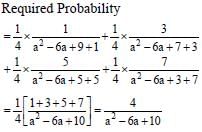
 × r2 = 1386 ⇒ r = 21 cm ⇒ GF = 2r = 42 cm
× r2 = 1386 ⇒ r = 21 cm ⇒ GF = 2r = 42 cm AF ⇒ AF = 63 cm
AF ⇒ AF = 63 cm AG = 7 cm
AG = 7 cm × 7 × 7 = 154 cm2
× 7 × 7 = 154 cm2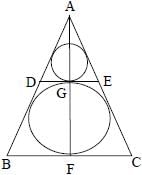


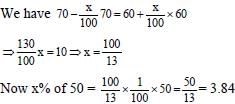

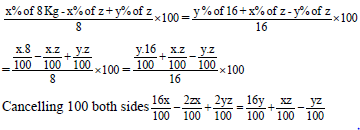

 number.
number. minutes.
minutes.
